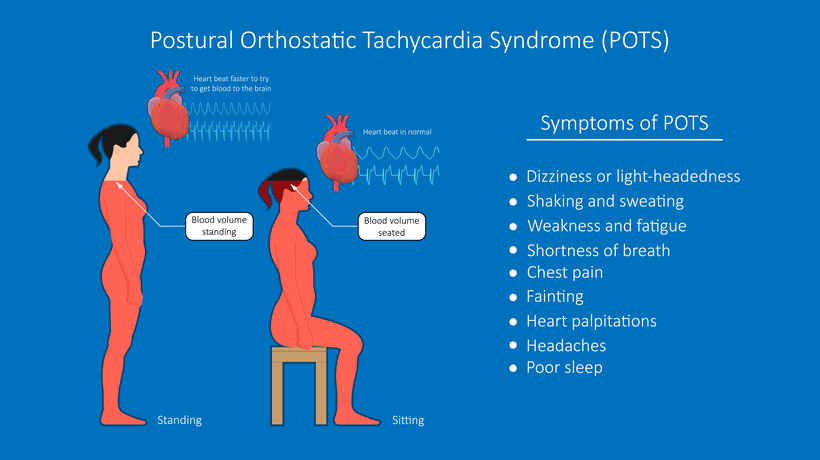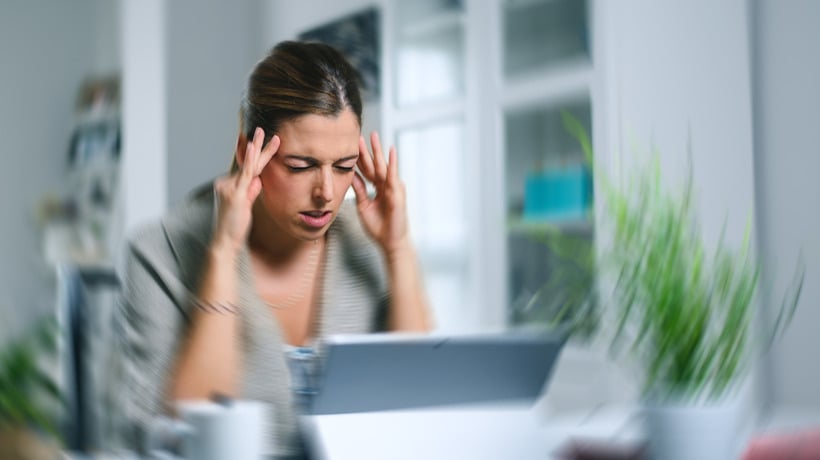We’ve all been there: you stand up just a bit too quickly, and feel a sudden rush of blood race up to your head. Your vision goes blurry, and you feel off-balance, even if it’s just for a few moments. For most people, lightheadedness and dizziness from standing up is an occasional occurrence; but for people living with POTS, these experiences are far more frequent.
POTS, or postural orthostatic tachycardia syndrome, is a form of dysautonomia, a disorder of the autonomic nervous system that impacts blood flow, specifically when standing up after lying down. Patients with POTS will find that their heart rate will increase when they move from a horizontal to an upright position to at least 30 beats per minute in adults, or at least 40 beats per minute in adolescents, during the first 10 minutes of standing. Although their heart rate increases, there is no significant drop in blood pressure.
Generally, most people with POTS are women between 15 and 50 years old, but recently, some people who have developed long COVID-19 have also been diagnosed with the syndrome.
Causes
Although researchers are not quite sure what causes POTS, they do recognize that symptoms arise from a combination of the following:
- Lower amount of blood in the circulation
- Excessive pooling of blood below the level of the heart when upright
- Elevated levels of certain hormones, such as epinephrine and norepinephrine
Symptoms of POTS include:
- lightheadedness or dizziness with standing
- fainting
- fatigue
- shakiness
- difficulty concentrating
- headaches
- heart palpitations
- bloating
- constipation
- shortness of breath

Treatment
Although some people with POTS require medication, about half of people will recover or improve over a few years with just three behavioral changes:
- Increasing their consumption of sodium
- Wearing compression garments
- Committing to gradual exercise
For those with severe POTS, a doctor may prescribe a medication to improve your body’s blood volume, reduce your heart rate, help your kidneys retain sodium, and improve your body’s blood vessel constriction.



